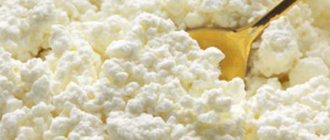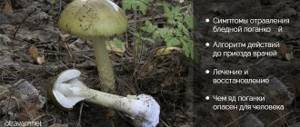There are several varieties of rows: greenfinch, gray, white and some others. If the greenfinch can be considered a conditionally edible mushroom, then the use of white or tiger is strictly prohibited. Even a small amount of this mushroom can cause irreparable harm to health. Therefore, it is important to know how row poisoning occurs, the symptoms of the disease and measures to save the life of the victim.
The most poisonous mushrooms
Many of those who decide to pick mushrooms do not understand their varieties and, out of ignorance, put inedible, poisonous ones in the basket. There are also myths among people that even the most inedible mushrooms can help in the treatment of serious diseases; tinctures and decoctions with them will cure incurable ailments. This erroneous opinion is another reason that a harmful representative of the forest ends up in a basket and will be eaten. Even a small amount of poisonous mushrooms can cause serious poisoning or death.
What mushrooms are considered the most dangerous in Russia, Belarus and Ukraine?
- The most poisonous is the toadstool. It contains toxins that instantly damage the liver. These include: amanitin, phalloin and phalloidin. These mushrooms are more dangerous in dry times, and they grow from late summer until late autumn.
- The next dangerous representatives of this species are the stinking, panther and toadstool fly agarics. From August to October is the time when it can be found in the forest. They contain hyoscyamine and muscarine - substances that negatively affect the nervous system.
- The red fly agaric is slightly inferior to its predecessors in terms of the concentration of toxins, but is also included in the list of poisonous ones. It is difficult to die from its consumption - the lethal dose is about 15 caps, but fly agaric can cause a characteristic picture of poisoning.
- whitish talker The
talker is whitish and reddish. It grows from July to November in the temperate forests of the northern hemisphere. These mushrooms contain muscarine, a toxic, potent compound that affects the nervous system. Causes severe poisoning, although deaths are rare. - Porcini mushroom's counterparts - gall and satanic mushrooms - can cause severe digestive upset. Satanic mushroom is more dangerous than gall mushroom; its use more often leads to poisoning. The gall fungus is found throughout Russia, Ukraine and Belarus. The satanic mushroom prefers warmer regions and grows in the South.
- Although strings are described in some literature as opportunistic pathogens, this is another representative of a large group of dangerous fungi. In their raw form, the stitches are deadly poisonous. They are often confused with morels. Consumption of string as food leads to severe poisoning and even death.
How long does it take for mushroom poisoning to occur? Each representative of this list has its own signs of poisoning and terms of impact on the human body, which we will now learn about in more detail.
Ordinary stitch, description + photo
The cap of the Gyromitra esculenta mushroom is always irregular in shape, resembling one or more hemispheres of the brain. Its diameter in most cases does not exceed 16 cm. The surface of young specimens is smooth, but with age it becomes wrinkled, resembling a compressed sponge. The color range is brown, less often - dark brown, burgundy, reddish and red.
The stem is not large compared to the cap. Its length reaches 3-4 cm at best. The shape is not symmetrical, with small grooves and wrinkles located over the entire surface. In cross-section, the stem is empty and very fragile, so to collect the mushrooms, they do not press them down, but cut them off carefully, placing them one at a time in a basket. Ask why if it is not edible? The answer is very simple, like many inedible forest fruits, they are used for medicinal purposes. The color of the leg has a yellowish-pink tint. The consistency is soft, reminiscent of frozen beeswax with the aroma of delicious fruits.
Each bag contains about 10 pale yellowish-gray spores.
The first signs of poisoning with toadstool
Topping the list of the most poisonous is the pale grebe. This is a pale lamellar mushroom of white, olive and greenish-olive color. The stem of the mushroom is cylindrical, slightly narrowed at the top, and club-shaped at the base. In appearance it often resembles a champignon or russula.
The lethal dose of the toxic substance, phalloidin, is only 0.02–0.03 grams. This amount is contained in 100 grams of toadstool. But consuming just 30 grams of the fruiting body of the toadstool leads to severe poisoning, and in children - to death.
A sign of poisoning with toadstool is that the first symptoms may not appear for quite a long time. The first signs of poisoning with toadstool may appear after ¼ or even 2 days.
- Usually, 6–24 hours after consuming the prepared product, severe pain in the abdomen and muscles, thirst, vomiting, diarrhea, and cold sweat begin.
- The limbs gradually become colder, the pulse slows down, and blood pressure decreases.
- In severe cases, if medical assistance is not provided in time, death occurs.
Treatment and prognosis for recovery
Treatment of people poisoned by mushrooms consists of 2 stages:
- carrying out a set of detoxification measures (riding the body of poison);
- restorative therapy.
This information is presented in more detail in the table.
| Name of detoxification or recovery procedure | Brief explanations |
| gastric lavage | used to remove mushroom residues |
| gastrointestinal sorption | the patient is prescribed sorbents (enterosorb, entrosgel, activated carbon) to bind toxins and subsequently remove them |
| hemodilution | a kind of “dilution” of blood in order to reduce the concentration of toxic substances |
| forced diuresis | administering large amounts of fluid intravenously while taking diuretics |
| correction of acid-base and (or) water-electrolyte balance | The patient is given intravenous glucose, electrolyte mixtures, etc. |
The kidneys and liver are the organs that are most often and severely damaged by poisoning. Based on this, the therapeutic measures indicated in the table are supplemented by protective hepatic (renal) therapy prescribed based on the results of a study of the patient’s health status.
Full recovery may take several months. But it also happens that persistent dysfunction of the liver and (or) kidneys becomes a lifelong payment for the mushroom delicacy.
Successful recovery depends on the following factors:
- timely initiation of adequate treatment procedures;
- age and general health (pregnant women, children and the elderly are at risk);
- qualitative composition of mushroom poisons (phallotoxins and amatoxins - the most dangerous poisons are contained in toadstool).
Mushroom poisoning is fraught with long-term treatment and serious complications. The risk of death cannot be excluded. To minimize the risk of poisoning, adhere to the following rules:
- do not cut mushrooms that you are not sure about, do not take old and wormy ones;
- strictly follow the technique for preparing mushrooms;
- When the first signs of poisoning appear, immediately call an ambulance.
This article has been verified by a current qualified physician, Victoria Druzhikina, and can be considered a reliable source of information for site users.
Bibliography
1.https://www.pediatr-russia.ru/sites/default/files/file/kr_ostotr.pdf 2. https://mosgorzdrav.ru/ru-RU/science/default/download/55.html
Rate, How helpful was the article?
5 Voted by 1 person, average rating 5
Did you like the article? Save it to your wall so you don’t lose it!
How long does it take for fly agaric poisoning to occur?
How quickly does mushroom poisoning manifest itself? Signs of intoxication appear just 1.5–2 hours after consumption.
Fly agarics of various types are all very dangerous; in small quantities they instantly affect the nervous system. A white or slightly yellowish top and a shaggy leg are signs of a toadstool-like representative of the fly agaric. The stinking fly agaric has an unpleasant smell of rotten potatoes.
The beautiful fairy-tale bright red cap of the red fly agaric attracts the attention of not only forest inhabitants, but also children, so it is dangerous for children.
Symptoms of poisoning in a person who has eaten fly agaric appear after 1.5–2 hours. They are manifested by the following symptoms:
- nausea, vomiting, excessive salivation;
- cramping abdominal pain;
- after some time, suffocation occurs, convulsions appear;
- at later stages - delirium and hallucinations, death is possible.
First aid measures
If symptoms of poisoning begin to appear, the victim must provide first aid as quickly as possible and call an ambulance. Delay is life-threatening . Rescue measures are carried out in the following order:
- Washing will help get rid of the remaining mushrooms in the stomach. It is better to use a pale pink solution of potassium permanganate for this. Just make sure that all the crystals are completely dissolved. Contact of undissolved particles on mucous membranes can lead to their damage. You need to drink as much of this liquid as possible. After this, induce vomiting by pressing on the base of the tongue. This procedure is repeated at least three times. A solution of table salt can also be used as a washing liquid. For every liter of water add half a teaspoon of salt.
- After washing, it is necessary to take a large dose of adsorbent. It is better to use modern effective drugs, for example, Filtrum, Eneterosgel, Polysorb and others. But you can also use regular activated carbon. It is taken at the rate of: 1 tablet for every 10 kg of the victim’s weight.
- If diarrhea is not observed, you need to take a laxative. This will help cleanse the intestines of residual toxic substances. Magnesia is suitable as such a remedy.
- After all the activities, put the patient to bed and wrap him in a warm blanket. You can apply heating pads to your arms and legs.
- If the victim suffers from dizziness, give him strong, freshly brewed black tea.
While you are waiting for the ambulance to arrive, the person should not be allowed to eat or drink alcohol . The use of antipyretic, antiemetic and antidiarrheal drugs is prohibited. This will only worsen the course of the disease. Upon arrival of specialists, tell them about all the activities carried out. This will make it easier for them to develop the correct treatment method.
How quickly does poisoning from talkers manifest itself?
talkers
Poisoning with talking mushrooms, how long does it take for symptoms to appear? It all depends on the amount of toxic product. In terms of muscarine content, talkers are superior to red fly agaric, so damage to the nervous system can occur within a few minutes and leads to severe poisoning.
Symptoms of talker poisoning appear after 15–20 minutes.
Signs of talker poisoning are:
- increased secretion of not only saliva, but also tears, severe sweating;
- the heart rate decreases and blood pressure may drop sharply, breathing becomes impaired;
- severe vomiting and diarrhea.
The antidote is atropine; with timely administration, the symptoms weaken. Death occurs in very rare cases.
How long does it take for poisoning with gall and satanic mushrooms to occur?
Where do lines grow?
The common variety of mushrooms predominates in distribution in Europe and North America. Unlike most, in order to germinate, it feeds on dead substrates characteristic of coniferous forests, mountains and sandy places. They are most often found in needles, less often they can be found under foliage.
You can only find stitches during three months of the year. Their birth falls in the spring months, from late March to May.
Boletus lookalikes
These are gall and satanic mushrooms. They taste bitter. In the gall mushroom, part of the leg is covered with a dark mesh. The second representative differs from the boletus in its reddish tubular layer and red mesh pattern on the stem.
satanic mushroom
Even with prolonged cooking, toxic substances do not evaporate, but affect the nervous system. The satanic mushroom is especially dangerous. Poisoning occurs after a few hours and resembles a severe disorder of the digestive system. Poisoning is accompanied by:
- nausea;
- vomiting;
- bowel disorder.
A little about waves
Volnushka (also known as milkweed) belongs to the class of lamellar mushrooms.
Distinctive characteristics:
- the color of the plates is light, sometimes with a pink tint,
- cap diameter – from 4 to 15 cm,
- the shape of the cap is depressed with a curved edge,
- the leg is hollow and loose inside.
The “hunting” season occurs in July and lasts until early October. Peak growth is August and September, when they can be found in large numbers in coniferous and mixed forests and meadows. The main conditions for their growth are tree roots.
Interesting fact. The most fertile areas are near the birch trees. Mushrooms act as mycorrhiza-formers for them, which means a mutually beneficial symbiosis for the roots of the tree and the mycelium of the moth.
A large harvest can be harvested after rain in the warm season. Many connoisseurs of the taste of mushrooms note volnushki as one of the most delicious mushrooms, incomparable even to saffron milk caps. They contain proteins, carbohydrates, vegetable fats, vitamins and beneficial microelements.
In our forests you can often find two types of tremors:
- white,
- pink.
Table No. 1. Description of types of waves:
|
|
| These mushrooms are quite large. The length of the leg is 5-6 cm, and the diameter of the cap can reach 15 cm. They have a distinctive light pink cap, with characteristic stripes, but when salted they lose their beautiful appearance and become gray-white. | |
| This type of wave is slightly smaller in size. The cap grows no more than 10 cm in diameter, the length of the stem is 4 cm. The color of the cap is off-white. |
In the photos above you can see what a wave looks like. But in addition to external advantages, this mushroom has some useful properties, which we will discuss below.
Edibility of the row
Basically, the row is not an edible species, but among them there are also those that can be eaten after boiling. It is almost impossible to distinguish between an edible and a poisonous mushroom on your own; only experienced mushroom pickers can do this. They also share their experience on how to distinguish an edible mushroom from an inedible one: if the caps have a smooth shape and a beautiful white color in good daylight, then they are poisonous and should not be eaten.
Mushrooms that can be eaten always come in any color - purple, pink, lilac, yellow, and so on. In addition, bad mushrooms have an unpleasant specific smell, which cannot be said about good mushrooms. Therefore, if a person is not sure what kind of mushroom is growing in front of him, it is better not to touch it and go pick other mushrooms.
People with the following conditions should not eat mushrooms:
- low acidity;
- gallbladder problems;
- chronic gastrointestinal pathologies;
- pancreatitis;
- cholecystitis.










